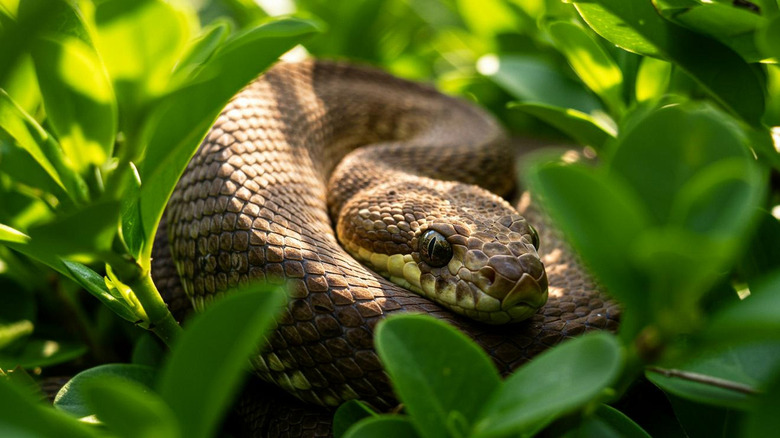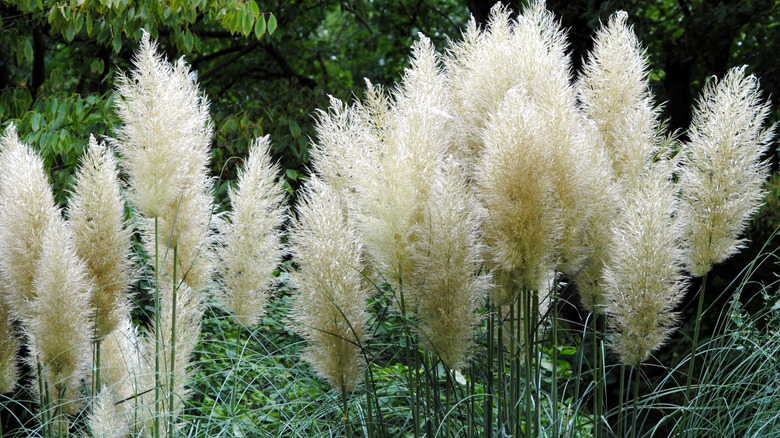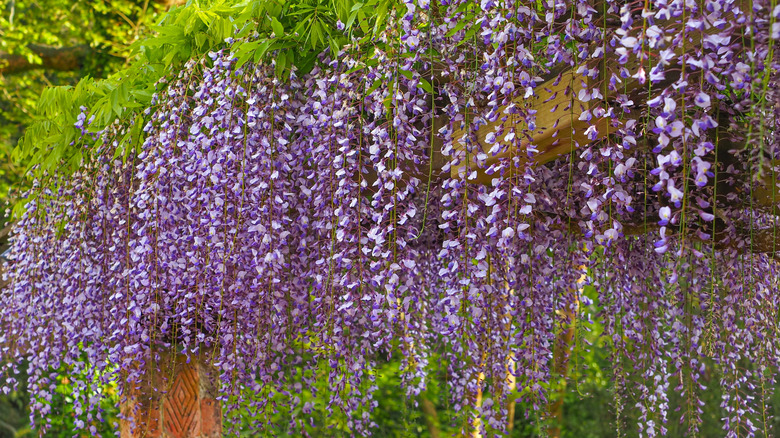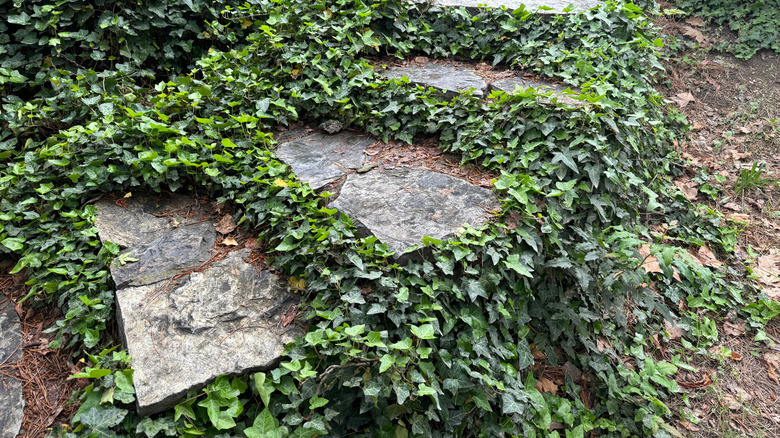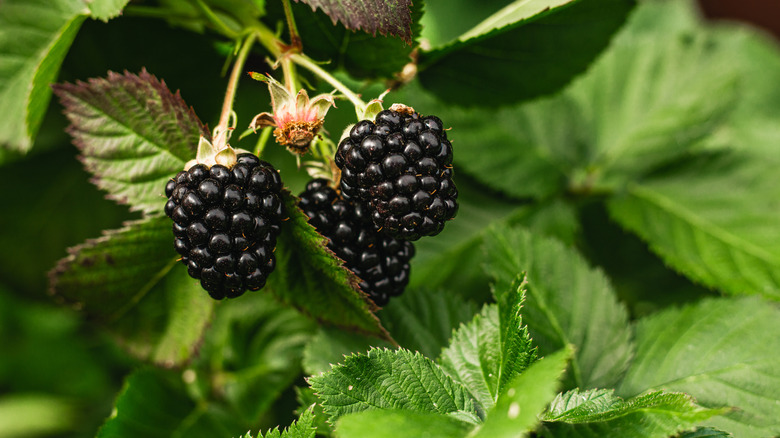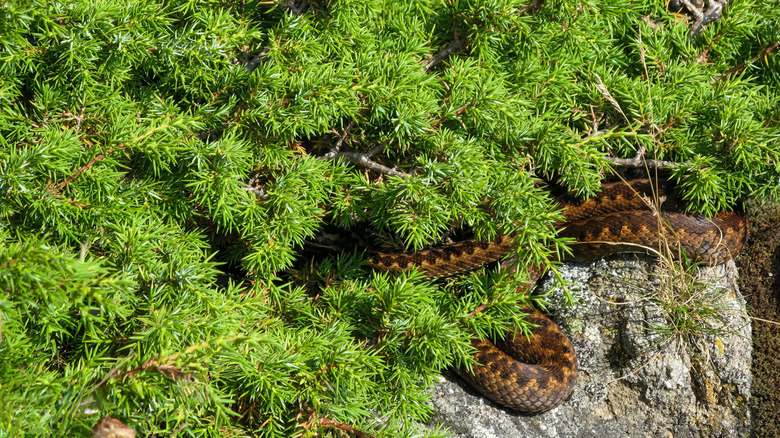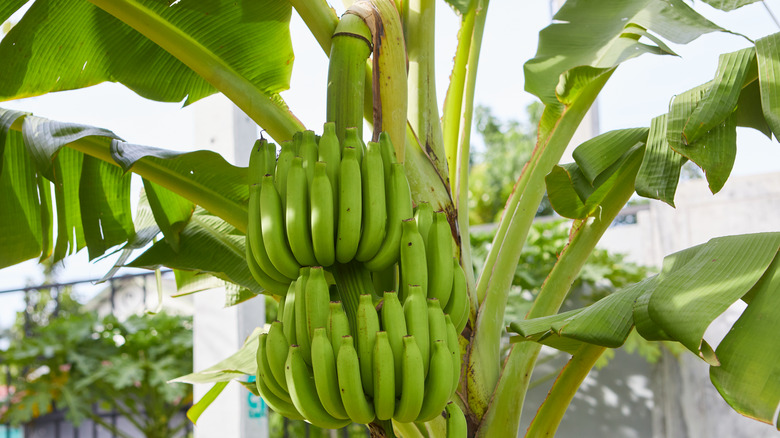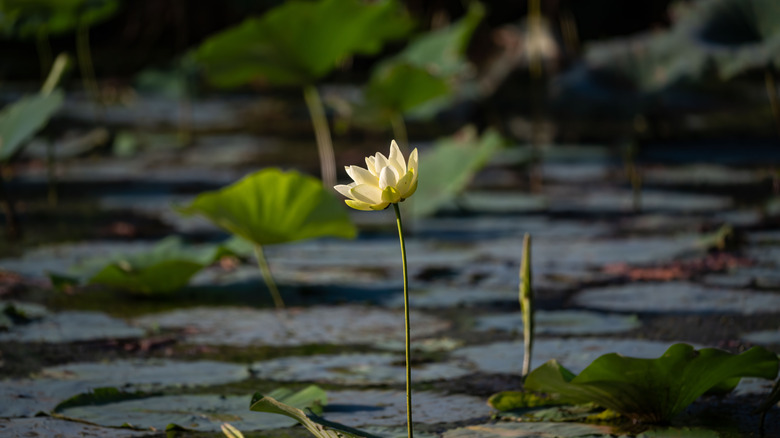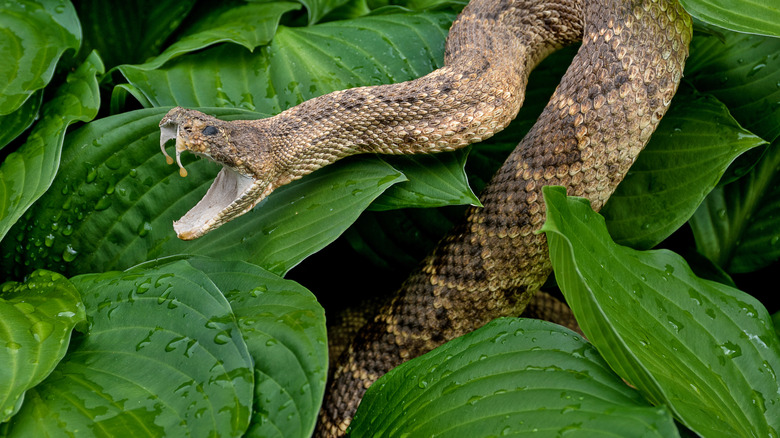14 Plants That Could Be Luring Garden Snakes Into Your Yard
No one wants to encounter a snake by surprise in the garden when pulling weeds. While snakes are often beneficial in your yard, gobbling up rabbits, mice, or voles that can wreack havoc in your garden beds, they still might give us the heebie-jeebies. Remember, non-poisonous snakes are more common in yards, and they typically have a round head and round pupils. You'll know the venomous ones by their diamond-shaped heads and cat-like slits for pupils.
If you want to know the first step in how to keep snakes out of flower beds, then figure out what plants snakes like. Did you know some plants, trees, or shrubs might be inviting them in? Snakes come into yards for a variety of reasons: food, shade, or shelter, and certain plants offer these to them on a silver platter.
Low-lying fruit on blackberry bushes attract mice, which can be some snakes' favorite meal. While snakes don't eat fruit, they will eat the little guys who do since they are carnivores who need to eat other animals or insects to survive. Snakes are shy, so they love a good place to hide. Water features and water plants, like American lotus, attract insects or frogs, which are also on the menu for many snakes and might draw them in as well. Keep on reading for 14 of the most common plants that might be luring snakes into your garden.
Snakes love to take cover in tall Pampas grass
Snakes love Pampas grass (Tripidium ravennae) because it grows thick and tall, offering the perfect cover. Snakes don't like to slither in open areas on the ground because they're easier to spot in shorter grass, where they can become prey to owls or hawks or even you. If you like tall, ornamental grass but don't like snakes, think about planting lemongrass (Cymbopogon citratus) instead. Lemongrass naturally contains citronella, which snakes don't generally like very much. It thrives in USDA Plant Hardiness Zones 8 through 11.
Wisteria vine looks snake-like and attracts snakes
While beautiful and fragrant, wisteria can attract snakes, including vine snakes and green tree pythons in zones 5 to 8. Wisteria and snakes go together so well that there's even an old Japanese legend about a wisteria tree turning into a snake. Snakes are drawn to wisteria because it gives them a higher vantage point and plenty of cover. Snakes aren't the only reason you should ditch the wisteria, though. It's considered invasive in many places, like North Carolina, and can overtake your yard.
Snakes like orange trees almost as much as people do
Navel orange trees (Citrus x sinensis) can be great for that endless supply of fresh orange juice, especially in zone 9 through 11. But you might inadvertently bring in an endless supply of snakes too. Orange trees attract their favorite snacks, like mice and birds, who feast on fallen fruit. Snakes also love the water that pools in the leaves of some orange trees. To make yours less hospitable to snakes, quickly clean up any fallen fruit to cut down on the scavengers that they will want to feed on.
English ivy gives snakes the perfect hiding spot
Snakes love English ivy (Hedera helix) and other ground covers because they offer a cool, damp place to hide. English ivy, in zones 4 to 9, is houses many insects and other prey small snakes can devour. Since it is invasive, it might be hard to get rid of in your yard once it takes a foothold. If you try to train English ivy, it might wind up training you instead. Instead, try Virginia creeper (Parthenocissus quinquefolia) since it's less aggressive in its native habitats and is less dense.
Cherry blossom trees offer snakes prey
Snakes love cherry blossom trees, not for the flowers like we do, but for the birds and animals that live in or near them. If you happen to hang a birdhouse from one, a snake can go looking for lunch in there. Snakes manage to climb trees without hands or feet because they use a technique called lasso locomotion. The snakes that use this to climb trees do it by wrapping their bodies around the trunk like a lasso and then wiggling upwards.
Blackberry bushes can draw in mice with snakes not far behind
While we love to eat blackberries, snakes prefer the mice or voles who might steal a berry after it drops to the ground. Snakes also love the thorny cover blackberry bushes provide. Don't pluck up all your blackberries just yet, though. Instead, keep grass or weeds around them trimmed back. Also, don't let fruit drop on the ground where mice will come for it. Still, it's a good idea to wear closed-toed shoes, pants, and gloves when harvesting the fruit to protect yourself.
Juniper bushes hide shy snakes
Thick juniper bushes (Juniperus communis) — happiest in zones 2 to 7 — provide the perfect hiding spot for snakes, especially when their branches grow low to the ground. This dense foliage is exactly what snakes are looking for in a new home. If you're worried about snakes, don't necessarily pull out all your juniper bushes. Try to keep them trimmed at least two feet off the ground. Or simply move juniper bushes away from places people congregate. Then, you won't mind snakes taking up residence there.
Milkweed will bring butterflies and snakes to the yard
The Monarch butterfly loves common milkweed (Asclepias syriaca) and so do many snakes, who hunt the insects who feed on them. Also, since milkweed is a dense, aggressive grower that can overtake the garden in zones 3 through 9, it offers plenty of cover for snakes looking to hide from predators. Instead of milkweed, think about planting marigolds. They're beloved by beneficial insects like lady bugs, but their smell might deter snakes. Their roots give off a bitter scent that especially younger snakes tend to avoid.
Banana trees might be a snake's favorite
If you live in zones 10 or 11 and have a banana tree (Musa acuminata) in your yard, you probably also have snakes. They love the shade from the oversized banana tree leavesand snacking on the bugs or animals that might come by to eat the bananas. Snakes are so common in banana trees that one even hitched a ride in a bushel of bananas to a New Hampshire grocery store. If you're looking for a fruit tree that snakes don't like, try the kaffir lime tree for its strong citrus smell.
Clover gives snakes cover
If you're thinking about letting clover take over your lawn, you might want to think again. Snakes love the dense cover of clover, as well as the bugs and other prey it can find there. Snakes will take advantage of a lush carpet of clover, especially if they are shedding their skin. The dense cover provides extra protection during this vulnerable time. One way to deter snakes from taking up residence in your clover is to keep it neatly trimmed. Regular mowing is key.
Ferns offer snakes a place to hide
Several types of ferns make pretty greenery to include in your garden bed, but they might end up attracting snakes with their thick foliage — which offers great hiding spots. Since they also grow around rocks, they are double the prize. Replace your ferns with garlic instead, which also thrives in zones 3 to 8 and will tolerate slightly acidic to neutral soil. Snakes, however, tend not to like the strong sulfur smell of garlic or the fact it can leave an oily residue on their skin if they wind through it.
Water-loving plants like lotus flowers can bring in snakes
Water-loving plants like the American lotus (Nelumbo lutea) flower bring beauty to the surface of a pond in zones 4 through 10. But they, and the ponds they grow in, might be attracting snakes into your yard. Water features, of course, encourage all kinds of biodiversity and support lots of different animals, like frogs and dragonflies — which snakes will also eat. There are whole species of snakes evolved to live in and around water, so know this about water features before you include one in your yard.
Hostas provide protective cover
Hostas are a low-maintenance perennial favorite in zones 3 through 9 among many, but they're also the popular garden plant snakes love to hide in. Their broad leaves keep snakes hidden, while they hang around waiting for slugs, small rodents, or another perfect meal to happen by. As sad as it is to cut them back when they are nice and full, try keeping hostas well-trimmed and divide them when they get too crowded. That way, you'll likely discourage snakes from taking up residence there.
Jasmine helps snakes cool off
Snakes love the cool shade that Jasminum officinale provides on hot days. Since snakes are coldblooded, they have to move to cooler places in the shade or warmer ones in the sunlight to regulate their body temperature. In North America, garter snakes and rat snakes might wiggle their way underneath a jasmine plant. Jasmine plants are hardy in zones 7 to 10, and you can try replanting them in sharp lava rock to help deter snakes from crawling underneath them.
